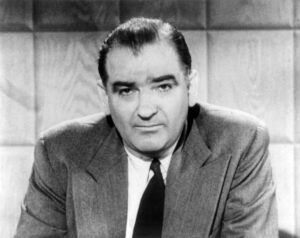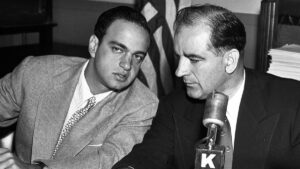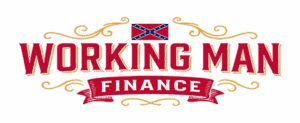In the world of politics and power, things are rarely what they seem. While J. Edgar Hoover built his image as America’s top crime-fighter, the reality is far more complex.
Hoover, the longtime director of the FBI, had disturbing ties to organized crime—especially the Lansky syndicate—and to figures who moved comfortably between business, politics, and Zionist interests.
What unfolded was a tangled alliance that helped shape one of the darkest and most misunderstood eras in American history: the McCarthy era.
A Lawman’s Strange Bedfellows
In 1972, investigative journalist Hank Messick shocked many readers when he published John Edgar Hoover: A Critical Examination of the Director, and of the Continuing Alliance Between Crime, Business and Politics.
At the time, most critics of Hoover focused on civil liberties.
Messick did something different—he exposed Hoover’s ties to the criminal underworld.
Messick’s book delved into Hoover’s relationship with Meyer Lansky, a top figure in organized crime, who just so happened to be Jewish.
The book revealed how Hoover pushed the narrative that Italian-American mafiosi were the primary force in organized crime.
He centered much of this myth around Joe Valachi, a relatively minor mob figure. Meanwhile, the actual leadership of the syndicate—Lansky and his circle—escaped serious scrutiny.
Secret FBI wiretaps, cited by Messick, showed Italian mobsters acknowledging Lansky’s control.
Hoover, however, seemed intent on steering public perception away from that truth.

The McCarthy Connection No One Talks About
One of the most disturbing parts of Messick’s book has to do with Senator Joseph McCarthy.
Best known for his infamous crusade against communists in the U.S. government, McCarthy was not acting alone.
Messick revealed that behind McCarthy’s rise was a little-known group: the American Jewish League Against Communism (AJLAC).
Founded for several reasons—one being to shield Jews from anti-Communist backlash—the AJLAC was concerned that Jews would be blamed for communist influence, especially since many of the early communist intellectuals in America were Jewish, and Karl Marx himself had Jewish roots.
To protect the community, some Jews believed it was better to lead the charge against communism rather than wait to be targeted.
But the group’s motives weren’t purely defensive.
Big Business and the Cold War Opportunity
The League also saw anti-communism as a way to gain influence and money.
Among its top financiers were Alfred Kohlberg, a China Lobby businessman who lost fortunes in communist China, and Lewis Rosenstiel, a liquor mogul with documented ties to the Lansky crime syndicate.
Both had financial incentives to push America toward war with communist nations. Rosenstiel, for example, had profited heavily from wartime liquor monopolies during WWII.
A new Cold War—or hot one—offered the promise of even greater returns.
In 1948, they backed Republican Thomas Dewey for president. Despite Dewey’s public image as a “gangbuster,” he had long standing ties to organized crime.
But Dewey lost to Truman, a president who—though he recognized Israel—was lukewarm about the Zionist project.
That loss changed the Zionist strategy
McCarthy: A Puppet for a Bigger Agenda
After Dewey’s loss, the League obtained a classified FBI report on communist infiltration in the U.S. government.
According to Roy Cohn, a member of the League and future McCarthy advisor, the document was shared among key insiders who decided it needed to reach the American public.
The group wanted a U.S. Senator to champion the cause. They vetted several Republicans, offering each one political backing and financial support.
The first three said no. The fourth read the report and said, “I’m buying the package.” That man was Senator Joseph McCarthy.
Just months later, in February 1950, McCarthy gave a now-infamous speech in Wheeling, West Virginia, claiming to have a list of 205 communists in the State Department. Thus began the “McCarthy Era.”

Trotskyites, Zionists, and the Real Battle Behind the Curtain
Here’s the twist that history textbooks leave out: While McCarthy was technically right about communist infiltration, the deeper battle was not simply between Americans and communists.
It was a proxy war between Stalinist forces and Trotskyite-Zionist elements—many of whom had already migrated to America and embedded themselves in media, finance, and politics.
McCarthy may have believed he was defending American ideals, but Messick’s research—and later confirmations—suggest he was being manipulated. His downfall, tragically, was orchestrated by the very people who first elevated him.
This narrative—of Hoover’s protection of the Jewish-led criminal underworld and the Zionist fingerprints on the Red Scare—has been largely ignored or downplayed in mainstream historical accounts.
However, Hank Messick wasn’t alone in pulling back the curtain.
The Judas Goats, another deeply suppressed and politically incorrect work, supports and expands on Messick’s revelations, particularly regarding the Zionist manipulation behind McCarthy’s rise and the broader effort to control the American Right through infiltration and subversion.

Roy Cohn: Fixer, Friend, and Syndicate Lawyer
Perhaps no one personifies this hidden power structure more than Roy Cohn.
He was McCarthy’s chief advisor. Later, he became one of America’s most connected political fixers.
Cohn was a close friend of J. Edgar Hoover and also worked with former CIA operative William F. Buckley Jr.
Along with Buckley, Cohn helped steer the modern conservative movement—though not toward traditional patriotism, but in the direction of pro-Israel, Trotskyite interests.
In the early 1950s, Cohn even cut a secret deal with the Anti-Defamation League (ADL) to protect Buckley’s public image.
This came to light during a failed libel lawsuit Buckley filed against The Spotlight, a nationalist newspaper that dared to expose these connections.

Final Thoughts: The Forces We Never See
The story of McCarthyism isn’t just about Cold War fear.
It’s about power—how it moves behind the scenes and uses idealists like McCarthy as pawns.
Messick’s book stands as one of the clearest looks into this shadowy world. It shows how business tycoons, crime syndicates, intelligence insiders, and Zionist operatives formed a quiet but potent alliance.
Together, they shaped the politics of fear, control, and propaganda that still echo in America today.
